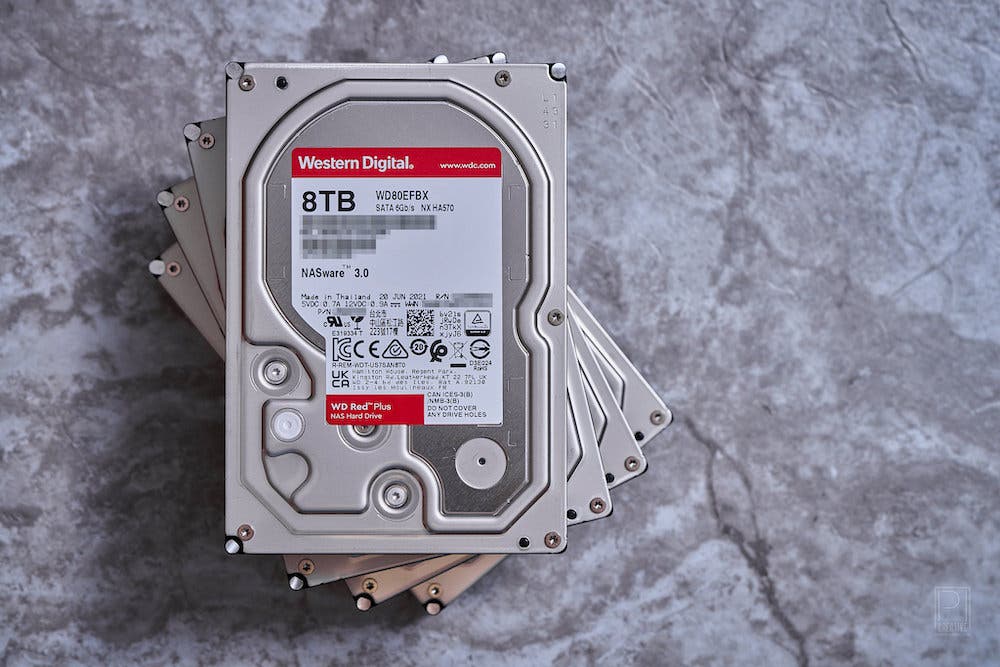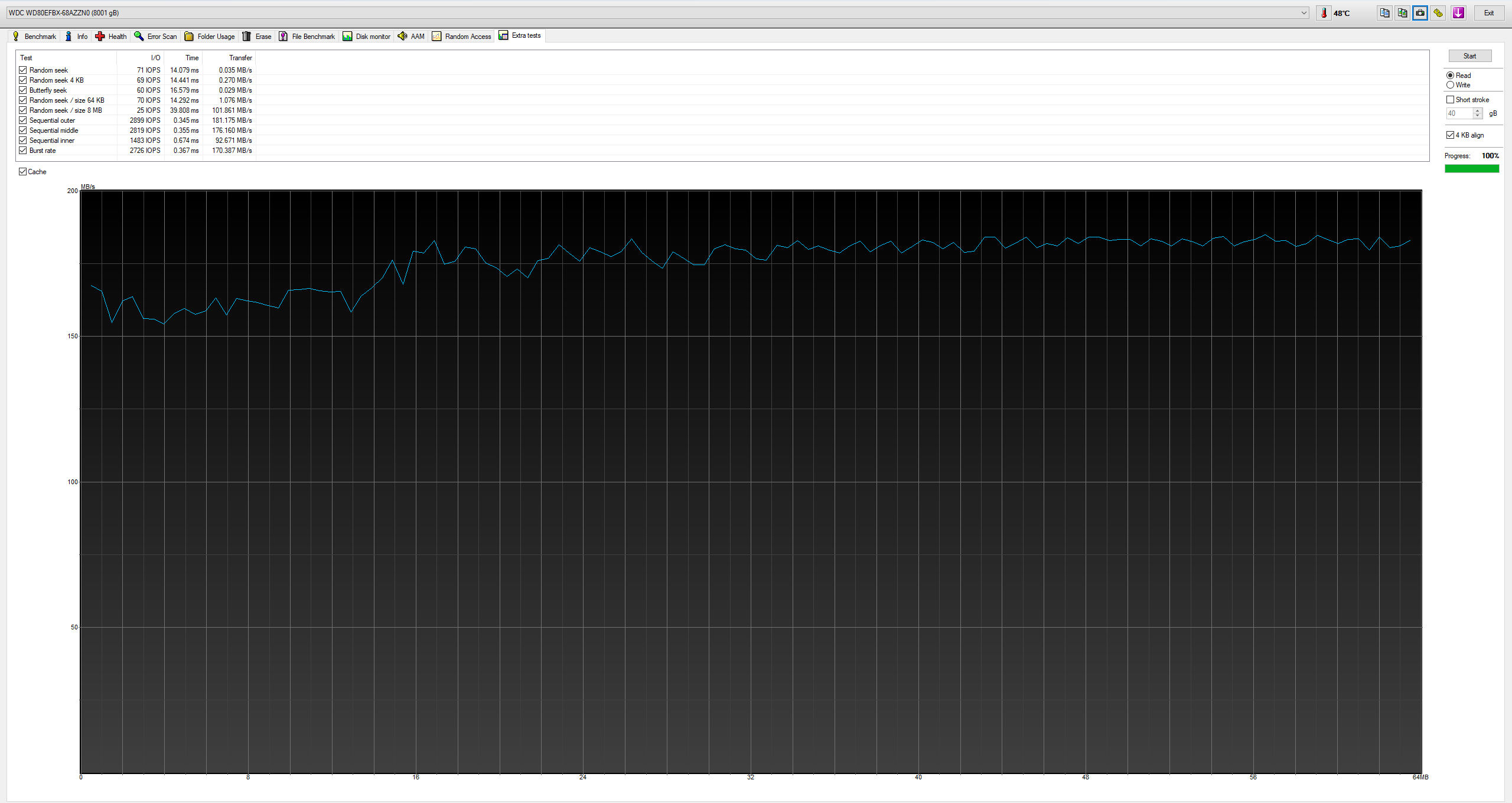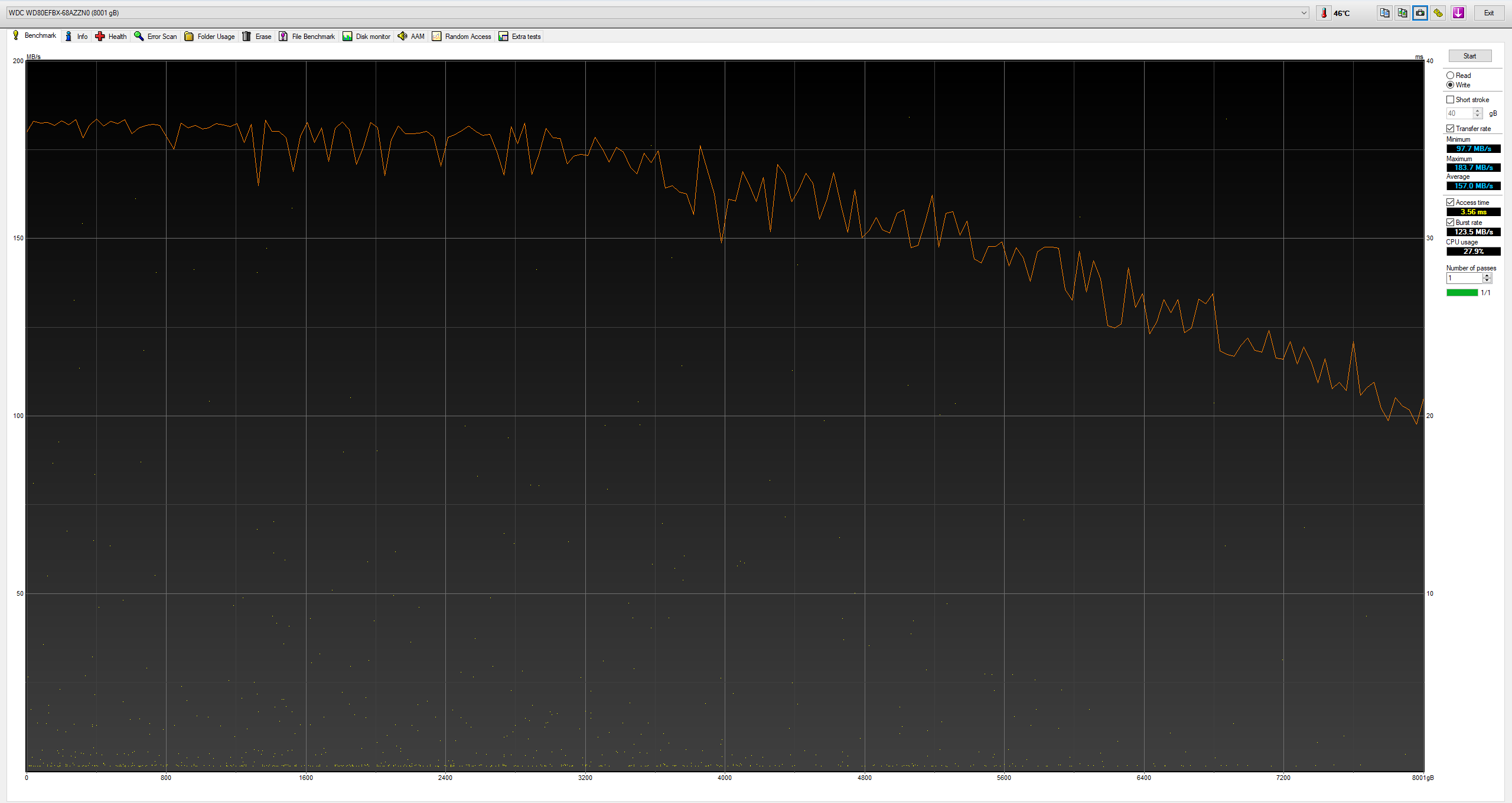With new cameras having increasingly higher megapixel counts, RAW files are getting progressively larger with each passing year. 4K (and some cases 6 or even 8K) footage are quickly becoming the industry standard as well. This never-ending quest for more storage has long plagued many photographers and videographers. As a result, many content creators have incorporated NAS (Network Attached Storage) solutions into their workflow. Essentially, these give creators the ability to store large amounts of raw files, footage, and other data onto a single network accessible storage pool spanned across multiple hard drives. However, for the best results, you’ll want to use hard drives such as the WD Red Plus Internal NAS Hard Drives which are specifically designed to operate within NAS devices.For this hands-on review, I tested the 8TB model of the WD Red hard drive.
Although, additional capacities ranging from 1TB to 14TB are also available. The WD Red Plus hard drives were engineered for 24/7 operation. They also come equipped with Western Digital’s proprietary NASware 3.0 firmware to ensure performance and reliability when deployed in NAS and RAID environments. I installed the hard drive into a Synology DiskStation DS1520+ NAS system to test it out.

Specs
Below are the spec highlights for the WD Red Plus Internal NAS Hard Drive:
| Capacity | 8TB (as tested)* |
| Cache Size | 256MB |
| Performance Class | 7200rpm |
| Interface | SATA III 6 Gb/s |
| Transfer Rate | Up to 210 MB/s |
| Compatibility | Designed with CMR technology for small or medium-sized businesses in RAID-optimized NAS systems with up to 8 bays. Perfect for handling increased workloads, including expanded OS compatibility and ZFS |
| Recording Technology | CMR |
| Dimensions (LxWxH) | 5.79 × 4 × 1.03″ (146.99 × 101.6 × 26.11mm) |
* also available in 1TB, 2TB, 3TB, 4TB, 6TB, 10TB, 12TB, and 14TB capacities

Performance
The hard drives worked right out of the box without any issues. Installing the drives into the Synology NAS was super easy thanks to the toolless drive trays that the DS1520+ uses. However, your milage may vary since this is dependent on the NAS server that you’re using. You may want to have a screwdriver on hand just in case your particular NAS requires drives to be screwed in. I benchmarked the WD Red hard drive prior to installing the drives into our NAS system. I found the average performance to be within 10.5% slower than the advertised transfer rate of 210 MB/s. Note that the specs does not specify if this is the maximum read or write rate, which benchmarks determined to be an average of 9% slower for read and 12% for write. Additional benchmark results are included at the end of this review.

After installing the drives into the Synology NAS, we simply powered it on, connected the NAS to our local network, and followed the guided configuration process. This took roughly 10 minutes in total. I was able to start populating the drives with data from my desktop and laptop computers from both wired and wireless network connections within the office. The WD Red hard drive utilizes CMR (Conventional Magnetic Recording) technology rather than SMR (Shingled Magnetic Recording) technology. Although SMR hard drives tend to be more economical compared to CMR hard drives of the same capacity, they are designed for wholly different workloads.
Without getting overly technical, SMR hard drives are better suited for data storage and archival workloads that involve infrequent drive access. On the other hand, the WD Red hard drives are CMR drives which are perfectly suited for use within NAS systems where large amounts of data are stored and accessed at high speeds.

Evaluating
Throughout the time evaluating the WD Red hard drives, I found the performance to be consistently quick and very quiet, even when under load. Although understandably not as fast as SSDs (solid state drives), I was able to quickly process entire Capture One sessions consisting of large RAW files (roughly 120MB and 200MB in size, shot on Sony A7R IV and Fujifilm GFX 100 respectively) that were stored on the WD Red Plus drives with no noticeable slowdown. Playing back 4K footage stored on the drives worked like a charm as well. Although, those looking to edit 4K+ footage stored on the WD Red Plus drives will likely want to put them into a NAS system that features a SSD cache. Obviously, your milage may again vary depending on your particular NAS system as well as the speed of your network.
I also appreciated the ample storage capacity that our test units provided. Each of the WD Red hard drives had 8TB’s of RAW capacity, totaling to a combined 32TB. Although, I chose to configure the four drives as a single 16TB RAID 6 array for added peace of mind since RAID 6 can survive up to two simultaneous drive failures. You can never be too cautious when it comes to safeguarding your data, especially if they happen to be client deliverables!
Aside from a blackout brought on by Hurricane Ida, the WD Red Plus drives was in use 24/7 for nearly two months straight and experienced no issues.

Thanks to its combination of ample storage capacity, overall performance, and robust reliability, the WD Red Plus Internal NAS Hard Drives are ideal options for photographers, videographers, and other content creators that often have to juggle massive amounts of data. If you’re thinking about adding a NAS system into your workflow, be sure to populate it with these drives.
Benchmarks
Here are the benchmarks for the WD Red Plus Internal NAS Hard Drives conducted using HD Tune Pro 5.75:
Drive 1
General Benchmark (Read)

General Benchmark (Write)

Random Access (Read)

Random Access (Write)

Additional Tests (Read)

Additional Tests (Write)

Drive 2
General Benchmark (Read)

General Benchmark (Write)

Random Access (Read)

Random Access (Write)

Additional Tests (Read)

Additional Tests (Write)

Drive 3
General Benchmark (Read)

General Benchmark (Write)

Random Access (Read)

Random Access (Write)

Additional Tests (Read)

Additional Tests (Write)

Drive 4
General Benchmark (Read)

General Benchmark (Write)

Random Access (Read)

Random Access (Write)

Additional Tests (Read)

Additional Tests (Write)

| Max. (MB/s) | Min. (MB/s) | Avg. (MB/s) | % Difference – Max. (MB/s) | |
| Advertised Transfer Rate | 210 | N/A | N/A | 0% |
| Drive 1 (Read) | 190.5 | 156.7 | 90.7 | 9% |
| Drive 1 (Write) | 185.1 | 155.7 | 85.4 | 12% |
| Drive 2 (Read) | 190.4 | 164.4 | 94.4 | 9% |
| Drive 2 (Write) | 185.4 | 162.3 | 96.7 | 12% |
| Drive 3 (Read) | 189 | 156.9 | 96.6 | 10% |
| Drive 3 (Write) | 183.7 | 157 | 97.7 | 13% |
| Drive 4 (Read) | 190.4 | 157.3 | 89.7 | 9% |
| Drive 4 (Write) | 185.1 | 155.8 | 90.2 | 12% |
| Average (Read) | 190.075 | 158.825 | 92.85 | 9% |
| Average (Write) | 184.825 | 157.7 | 92.5 | 12% |






